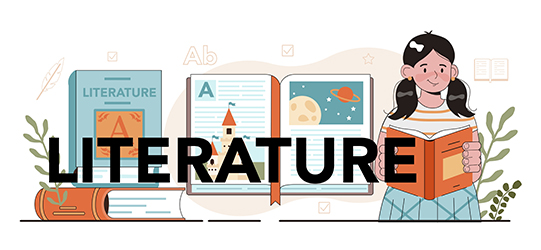

 Back
Back
You could be a brand-new author or an already established one. A well-built device usage can elevate prose from meagre to magnificent.
Literary devices up-level your writing, make it more impactful, and craft it to hook readers right from the introduction.
So, as a creative writer, you must be able to attract the audience and enhance their experience by providing ways to understand your script. Literary devices help you understand the strategic use of the text and make the writing majestic.
Writers use these tools to express their ideas and enhance their creative writing. The devices help highlight concepts and ideas.
Standard literary devices used by authors for creative writing
Hyperbole
Hyperbole is the art of exaggerating the truth to express a feeling even though it does not exist. The purpose here is to amplify personal responses by exaggeration. We use it in our everyday speech.
Simile
A simile is a figure of speech where there is a comparison of two different things by highlighting the similarities. It makes the description more vivid. The simile uses words such as ‘like’ and ‘as’ to establish a similar relationship. When there is an 'as’ in a sentence, it is most likely a simile. A simile helps paint the picture in the reader's mind by comparing the characteristics with another well-known subject.
Metaphor
A metaphor is an expression that describes an object or action in a way that is not true but helps explain an idea or make a point. Metaphors should not be confused with a simile. They both are ways to compare a subject with another thing. The objective of a metaphor is to paint striking images in the reader's mind to help better express the ideas and make your writing more productive.
Symbolism
Symbolism is the use of symbols to depict deeper meanings and qualities. For example, the dove is the symbol of peace, and black is the symbol of evil. Most symbols signify different ideas and qualities. For example, white denotes death in one context and purity in another. The importance of symbolism is to signify ideas and qualities different from their literal sense.
Foreshadowing
Foreshadowing is a technique that informs readers about what will happen later in the story. The purpose of foreshadowing is to help readers develop expectations from the draft or build suspense.
Imagery
Imagery helps the reader imagine the world using the five senses – taste, touch, sight, smell, and sound. Imagery can also pertain to movement, emotions, and feelings. Imagery adds life to writing, creates the mood, and helps the reader visualise and experience what the author has created.
Motif
A motif is a recurrent idea that repeats in the story to reinforce the theme.
Personification
Personification uses human traits to describe non-human things using human-like qualities like yelling, howling, waving, crying, etc. The purpose of personification is to give rise to human emotions for non-human things so that the readers can better connect.
Allegory
An allegory expresses a deeper meaning, concept, or hidden idea, such as the pain and emotions experienced by the characters without explicitly talking about it.
Flashbacks
Flashbacks are used to introduce events before the story. Flashbacks to previous events split up present-day scenes in a story, usually to build suspense toward a big reveal. Flashbacks are also a way to present the introduction, gradually revealing to the reader what happened in the past.
Readers can use literary devices to gain insight into the authors' intended meaning, and writers can use them to better connect with readers!